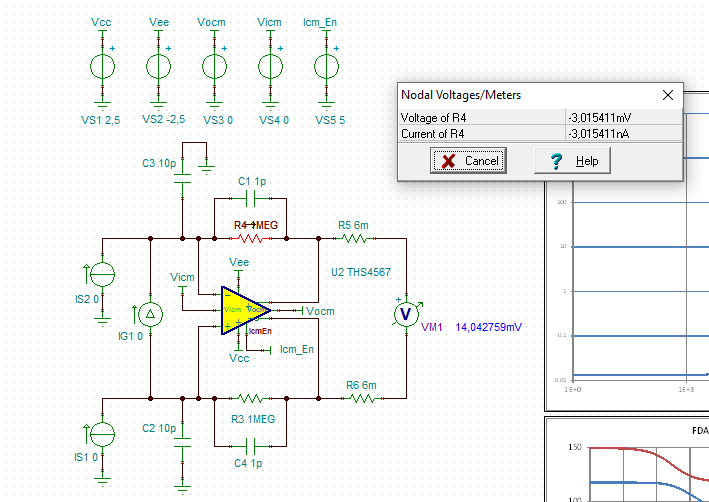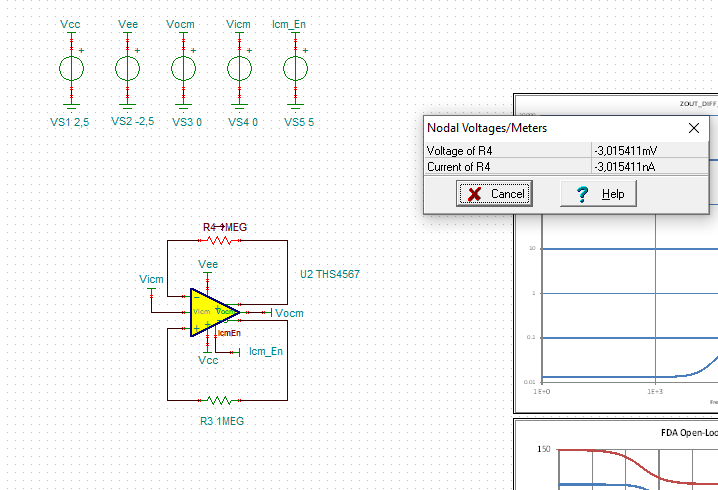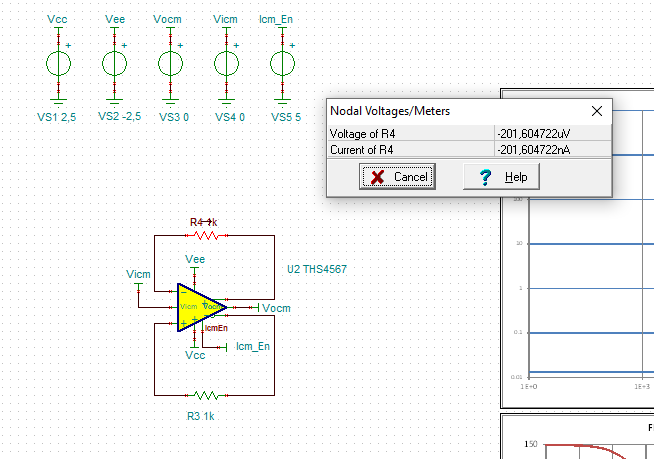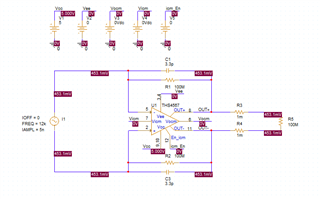Other Parts Discussed in Thread: TINA-TI
Hello Team,
I'm posting on behalf of my customer, please see the inquiry below:
Hello,
I built the circuit in the figure on a four-layer PCB, replacing R1 with an AD8338 variable gain amplifier.
I used a single 5V supply and connected ICM EN to gnd.
I'm investigating why I'm getting 20nA on the feedback path.
Actually, I'm getting 0.5V on the inputs and 2.48V on the outputs.
On the datasheet, I see a much lower current than what I get (in the order of pA).

Regards
Renan








